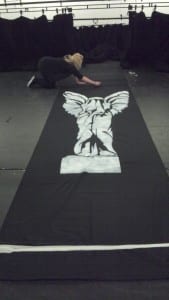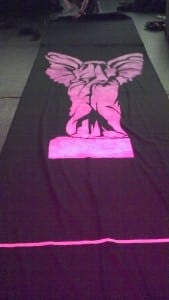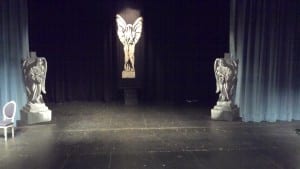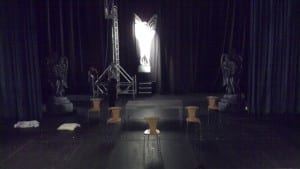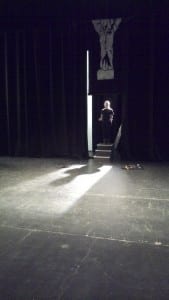The Get-In, Fit-Up and Post Show Evaluation
The day of the production started with measuring up the angel to make sure we suspended it at the right height in relation to the steps and the upper curtain height, as seen below.
Then, with the help of the tech team, we weighted the wooden angels in position, and made sure that the lights were set up to highlight the painting strokes and colours.
We also specified how the backlight should work, standing in the space to see make sure that it would create the desired long shadow effect.
The setting up process for the production ran relatively smoothly, which was due in part to the thorough technical and planning documentation completed by the production team, and by our long term planning and completion of the technical elements. We had decided, for example, to maintain the original set ideas as much as possible, and the changes that were made were, in my opinion, a reflection that we needed to simplify the design, whilst keeping the spectacle which we initially wanted to achieve. We were forced to emit the fabric drapes as we overran in our production schedule, but on reflection I think that this would have made to stage image too cluttered.
I also feel that the contrast between the downstage aspects of the stage, and the upstage images were perhaps too strong, as in relation to the audience size and positioning, this may have been too ambitious, considering that sightlines may have been restricted at some moments. The right hand side of the audience, for example, may have found it difficult to see the bedroom scenes. However, I also think that, as we did have this opposition of settings and styles, there was always a part of the stage which every part of the audience could see. I was particularly pleased by the way that the set pieces framed and filled the stage space, which, in my opinion, were the correct size and created the desired effect of forming an impressive and well executed set image.
Word Count: 419.
